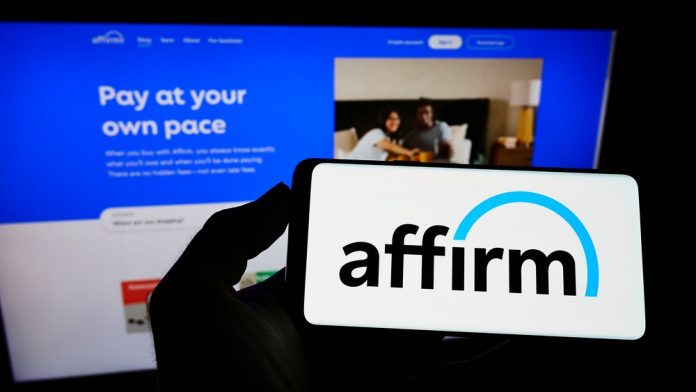Six months ago, Affirm Holdings, Inc. (NASDAQ: AFRM) was all the rage. Growing adoption of the company’s buy-now-pay-later (BNPL) technology and a partnership with Amazon.com pushed the stock as high as $176.65.
MarketBeat.com – MarketBeat
Soon thereafter, the market started to put high-growth, unprofitable companies under the microscope. This along with the emergence of new competitors and concerns about Affirm’s business model in a less accommodating economy dragged the share price under $20 last month.
Was it a case of irrational exuberance that caused the recent IPO to triple in the back half of 2021? Yes and no.
Overzealous retail traders pumped plenty of upstart tech names to insane levels, honing in on top-line growth and social media cues while ignoring net losses. Affirm undoubtedly got roped into the frenzy, especially once it joined the ranks of emotion-driven meme plays.
At the same time, some of the ascent can be traced to Affirm’s impressive growth trajectory and long-term prospects in ecommerce financing.
Insider Intelligence projects that BNPL transaction volume will reach $680 billion globally in 2025 due to the proliferation of online shopping and consumer disdain for credit card interest.
As one of the incumbents in the space, Affirm stands to be a major beneficiary of this expansion. Ignore the near-term noise. Pay attention to what lies ahead—and pay today’s low price for big gains later.
Why is Affirm Holdings Stock Under Pressure?
In addition to unprofitable growth names falling out of favor, Affirm has faced criticism about its so-called “bad debt”. This refers to the fact that 3.7% of outstanding loans were at least 30 days past due through the end of March 2022. It marked a significant leap from the 1.4% that was recorded one year prior.
The metric seemed to lend support to growing suspicion that the inflationary environment is having a detrimental effect on shoppers’ abilities to make on-time payments. After all, prices on everyday needs like gasoline and groceries soared soon after many BNPL contracts were established. And since Affirm doesn’t charge late fees, the rise in late payments could only be perceived as a negative to many investors.
BNPL providers have remained in the hot seat in recent weeks. The looming threat of a recession now has the market concerned about a slowdown in discretionary spending. This includes online purchases made at Amazon and Shopify online storefronts, both of which Affirm is highly dependent on.
Who are Affirm’s Competitors?
As consumers embrace tech-forward, budget-friendly alternatives to credit card interest as a means to get what they want, the BNPL industry is attracting many new players. Block’s Afterpay is perhaps Affirm’s biggest competitor given the vast amount of merchants using the former Square’s point-of-sale (POS) solutions.
On the international front, Australia’s Zip and Sweden’s Klarna are forces to be reckoned with as well considering the strength of their brands and established footprints in non U.S. markets. Along with Affirm’s Adaptive Checkout and Afterpay, these groups are considered the leading “direct’ BNPL providers.
Then there are a host of indirect providers, or facilitators, that are getting in on the action by allowing merchants to offer BNPL solutions created by the Affirms of the world. These tend to be the major payment processors like Mastercard and Visa. Stripe, which Affirm recently announced will be bringing Adaptive Checkout to its domestic e-commerce merchants, also falls under this category.
Is Affirm Stock a Buy?
Affirm is also facing questions about the impact of rising interest rates on its business model. They are fair questions given that consumers are more likely to think twice about going the BNPL financing route if rates move higher even if they remain at a distance from credit card rates. Management noted, however, that there is a lag between when increased rates make their way into Affirm products. This will make developments around the path of future rate hikes an important driver of near-term stock performance.
More importantly, Affirm sits in an advantageous position in a market that won’t simply be a one-hit pandemic phenomenon. BNPL is here to stay and Affirm’s brand strength and valuable partnerships with Amazon, Shopify, Stripe, and others will make it a successful (and eventually profitable) business over the long haul.
Through the end of last year, more than 170,000 merchants representing over 11 million consumers were using Affirm’s BNPL technology. Both figures will only grow over time as new merchant relationships are formed and more consumers learn about BNPL as a viable checkout option.
Most Wall Street analysts seem to be looking at this bigger picture in spite of the near-term economic challenges in calling Affirm a buy. Others are opting to go the “wait and see” route in calling it a hold.
The stock will probably be choppy in the months ahead as the ramifications of a potential recession get debated among buyers and sellers. But investors that buy at these depressed levels will eventually come out ahead.

